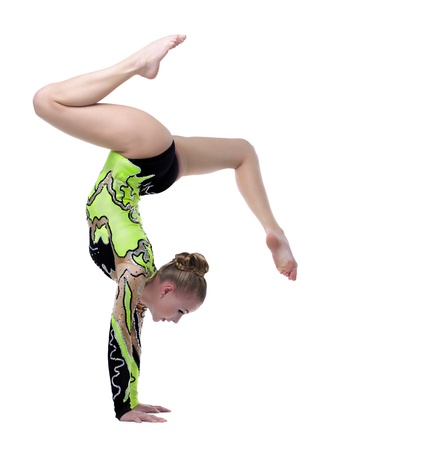Note that your final mark will not be saved in the system.
3.2.2.1 Biomechanical principles Typeit
Type the correct answers into the spaces. Fill all the spaces before clicking ‘Check Answers!’

Factors affecting stability
The (CoM) is defined as a point on the body or an object where the mass is said to be concentrated. Changes in body position affect the location of the CoM due to the variation in where mass is . For example, a gymnast's centre of mass is when they are performing a handstand than when they lower themselves into a headstand, as the distribution of mass shifts in the direction towards their legs.
Stability refers to the of a body to motion, allowing it to maintain the desired position. It is affected by a number of different factors:
of the CoM – As the CoM is lowered, stability . For example, a football player who is shielding a ball with their body would be stable if they were standing straight compared to if they were bending their legs.
- Mass – The greater the mass, the the stability. This is due to a greater force needed to overcome the inertia of moving a body. For example, a front-row forward in rugby would be adept than a nimble full back at riding a tackle.
- Area of the base of support – The the area of the base of support, the greater the stability. The position adopted by sumo wrestlers is a good sporting example of how standing with the legs far apart helps to maintain a stable body position.
- Line of gravity – The line of gravity is created by drawing a vertical line from the down to the ground. The closer the line of gravity to the centre of the , the greater the stability.